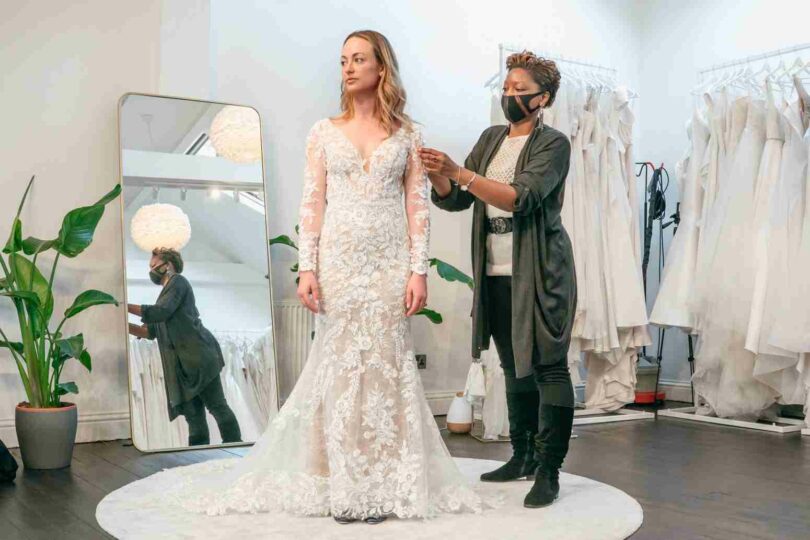
Your wedding dress is one of the most important garments you’ll ever wear, and ensuring a perfect fit is crucial. Wedding dress alterations can transform a beautiful gown into your dream dress. Whether you need minor tweaks or major modifications, following a well-structured plan will help make the process smooth and stress-free.
1. Schedule Your First Fitting Early
Timing is everything when it comes to wedding dress alterations. The ideal time to schedule your first fitting is about 3-6 months before your wedding. This allows enough time for multiple fittings if necessary.
What to Bring to Your First Fitting
- Your wedding shoes (to ensure the right dress length)
- Undergarments and shapewear you plan to wear on the big day
- Any accessories, such as veils or belts, to see how they complement the dress
2. Identify the Alterations You Need
Wedding dress alterations can vary based on the gown’s design and your preferences. Here are some common adjustments:
Basic Alterations
- Hemming: Adjusting the length of the dress to match your height.
- Taking in or letting out: Ensuring the bodice and waist fit perfectly.
- Adjusting straps: Shortening or lengthening straps for better support.
Advanced Alterations
- Reshaping the neckline: Customizing the neckline for a more flattering look.
- Adding or removing sleeves: Transforming a sleeveless dress or modifying existing sleeves.
- Bustle creation: Adding a bustle to lift the train for easier movement after the ceremony.
3. Plan for Multiple Fittings
Most brides require at least 2-3 fittings to perfect the fit of their dress. Each fitting serves a specific purpose:
- First fitting: Initial alterations and pinning for adjustments.
- Second fitting: Refinements based on the first alterations.
- Final fitting: Ensuring everything is flawless and ready for the big day.
If your weight fluctuates, a final fitting closer to the wedding date will help make last-minute tweaks.
4. Budget for Alterations
The cost of wedding dress alterations depends on the complexity of the work. On average, brides should budget £150 – £500 for alterations. More intricate modifications, such as resizing or adding embellishments, may cost more.
5. Work with an Experienced Tailor
Choosing a skilled professional for your wedding dress alterations is essential. At Alterations Boutique, we specialize in high-quality bridal alterations with experienced tailors who ensure every gown fits perfectly. Plus, all fittings, including consultations, are free.
6. Don’t Forget the Final Touches
In your last fitting, make sure to check:
- The dress fits comfortably when sitting, standing, and dancing.
- The hemline is at the perfect length with your wedding shoes.
- The bustle (if added) is easy to fasten and secure.
7. Store Your Dress Properly Before the Wedding
Once your alterations are complete, store your dress in a breathable garment bag, away from direct sunlight and moisture. Hang it carefully to avoid wrinkles and ensure it looks pristine on your big day.
Final Thoughts
Wedding dress alterations are a key step in making your gown look and feel perfect. By planning ahead, working with a skilled tailor, and allowing enough time for fittings, you can ensure a stress-free experience. If you’re looking for expert tailoring in London, Alterations Boutique is here to help with precise and professional alterations tailored to your needs.
Ready to perfect your wedding dress? Contact us today for a free consultation!





